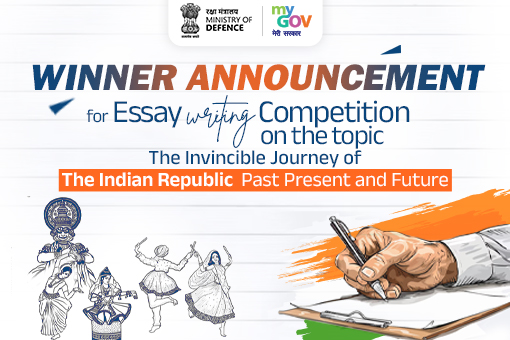How does India taken a leadership role in tackling climate change?

India has always been a key player in climate action; India believes in actions rather than just words. Several initiatives have recently accelerated in order to combat climate change, thanks to Prime Minister Modi’s capable leadership.
However, India’s most recent stimulus (2021) is more environmentally friendly than ever, with two-thirds of the funds earmarked for a green recovery, including approximately $3 billion USD in battery development & solar PV. While the additional stimulus is a positive step, India continues to support coal by providing new loans to a number of thermal power projects, undermining a green recovery. India was one of the signees at the COP25.
The following are some of the major initiatives undertaken by the Government of India.
1. NAPCC : The National Action Plan on Climate Change is a policy document aimed at climate change, was established by The Prime Minister’s Council. It was created with the understanding that India’s economic need to tap its natural resources must be balanced against the need to preserve ecological balance.
The Indian government had launched 8 missions as part of the NAPCC which are-
● National Solar Mission
● National Mission for Enhanced Energy Efficiency
● National Mission on Sustainable Habitat
● National Water Mission
● National Mission for Sustaining the Himalayan Ecosystem
● National Mission for a “Green India” Goals
● National Mission for Sustainable Agriculture
● National Mission on Strategic Knowledge for Climate Change
2. NCEF: The National Clean Energy Fund (NCEF) was established by the Indian government in 2010 to finance & promote clean energy initiatives as well as research in the field. The corpus of the fund is built by levying an INR 50 cess on each tonne of coal produced locally or imported (subsequently increased to INR 100 in 2014).
3.ISA: International Solar Alliance, launched jointly by India & France on November 30, 2015, at the United Nations Climate Change Conference in Paris in the presence of Mr. Ban Ki Moon, former UN Secretary-General.
4. BS: Bharat Stage Emission Limits Vehicle emissions are one of the leading causes of air pollution. The government to implemented the BS 2000 (Bharat Stage 1) vehicle emission norms in April 2000, followed by the BS-II vehicle emission norms in 2005. In 2010, BS-III was rolled out across the country. However, in 2016, the government opted to follow worldwide best practices & bypass BS V completely, opting for BS-VI
Instead.
5. The Clean Energy Cess on coal has been increased in India, making it one of the few countries to do so. A $3 billion Clean Energy Fund is used to promote the use of clean technologies. In order to boost the carbon sink, the government is expanding investments in afforestation.
6. India has set a goal of having forest cover 33% of its land mass. India’s overall forest cover covers 21.67% of the country’s entire geographical area, according to the biennial State of India’s Forest Report 2019 (SoFR 2019).7. 100 smart cities, the National Mission for Clean Ganga, the National Air Quality Scheme, & others are among the other initiatives.
7. To address the problem of desertification in India, the country has developed a 20-year comprehensive National Action Programme (NAP). The goals are:
● Drought management, preparedness, and mitigation
● Development based on a community approach
● Promote the improvement of local communities’ quality of life
● Promote suitable research and development initiatives and interventions.
● Promoting self-governance to empower local communities so that they can deal with issues pertaining to climate change.
To bring a positive change to the environment, I have made some conscious decisions which
helped me live a sustainable life-
1. I made some basic plastic swaps which were, bamboo toothbrushes, steel straws, bamboo toilet paper, bamboo reusable kitchen towels, bamboo paper napkins, shampoo bars, etc.
2. Whenever I go out shopping I always carry my cloth tote bag & I carry a jute bag for my office lunch.
3. I have also started creating awareness on Instagram about how to live a zero-waste lifestyle & sustainable living.
4. I reuse my plastic containers for useful things like storing food, collecting old clothes/ products etc.
2) If we are to look into the biggest concerns that are hovering over not only India but also the whole world, climate change would top that list. In recent years climate change has been one of the biggest issues which we not only as Indians but as Global Citizens face affecting millions all over the world. Climate change is also one of the key factors for increase in diseases all over the world.
The effects of climate change on human l components of human health — lives and health are multifaceted. It threatens the key clean air, safe drinking water, nutritious food, and secure housing and has the potential to reverse decades of global health advances. Lack of good air to breath, contaminated water, and drastic change in weather are just a few examples of how climate change is and in the near future will more drastically affect our lives and cause more problems for us. As per WHO, between 2030 and 2050, climate change is projected to result in around 250 000 more fatalities per year due to starvation, malaria, diarrhea, and heat stress. The direct harm costs to health are predicted to cost between $2 billion and $4 billion annually by 2030. Areas with inadequate health infrastructure, primarily in poor nations, will be the least equipped to react and prepare without aid.
During this time, it is very important that the governments take immediate actions to deal with this situation. For more this issue of climate change is neglected the bigger this problem will become. This is the time for immediate and effective action. That’s exactly how Prime Minister Narendra Modi and his led government are tackling climate change. Our country under the guidance and leadership of PM Modi has taken the lead in tackling climate change and has come up to become the leader in saving the environment and moving towards green energy.
The recent budget is a great example of the efforts of PM Modi and his government is tackling climate change and do everything to save the environment. goals, the Union Budget 2022In keeping with India’s climate change 23 promoted energy transition by boosting local manufacture of solar power equipment and batteries. The government has already established a target of 500 gigawatts (GW) and a 50 percent share of noncommitment to attain net– fossil fuel energy by 2030. This is supported by a zero-emissions by 2070, which was made at last year’s global climate meeting in Glasgow. This kind of budgets and policies depicts the exemplary leadership of PM Modi . The main issue that was faced earlier was that there was a practice of collective blaming and especially this blame was put upon fast developing nation like ours, but under PM Modi’s leadership India has moved from an inconvenient need of the hour.
Now the question arises that how we, the people as global citizens can help in saving our environment. We need to make smart choices and move towards sustainable and green ways in our daily life. The path towards this transformation involves making everyday choices within your control, such as driving and flying less, moving to a “green” energy source, and altering your diet and purchasing habits. Climate change will not be fixed by our purchasing or driving habits alone, although many experts think that these are significant and may persuade others to make changes as well (more on that later). We need to become examples for others and become ambassadors for protecting our environment. Students have a more important role to play and help in raising awareness. Only through collective approach can we ensure that the world is habitable for our next generation.
It is high time that we all join in with the idea of collective participation to save our future. save our environment.
3) Climate change is highly concerning for humans and all leaving beings. A significant variation in the weather pattern of a region is called “Climate Change”. The primary reason for climate change is to be Global Warming, Global warming is human to induce because green-house gases coming out of fossil fuels, such as Co2, and CO play a big role in it. It is the greatest threat to the rapidly warming climate, and global public health. Approx. 200 journals through an unprecedented joint statement have urged the global leaders to cut the heat-trapping emission. “THE LANCET”, “THE NEW ENGLAND OF MEDICINE”, “THE BRITISH JOURNALS”, said that the climate change is need to be addressed immediately without any waste of time. Climate change is and will have a great impact on health, economic, social-economical, life, and mental state.
India’s Role and Action to control Climate change:
At the Conference of Parties(CoP26), PM Modi declared a five-fold strategy which was termed the Panchamrita to achieve the target. These five points include:
1. India will get its non-fossil energy capacity to 500GW by 2030
2. India will meet 50 percent of its energy requirement from renewable energy by 2030
3. India will reduce the total projected carbon emissions by one billion tonnes from now onwards till 2030
4. By 2030, India will reduce the carbon intensity of its economy by less than 45 percent
5. So, by the year 2070, India will achieve the target of Net Zero
India’s climate change targets are laudable. This is because India has not been a historical contributor to the greenhouse gas emissions; from 1870 to 2019, its emissions have added up to a minuscule 4 percent of the global total.
It is lambasted as the world’s third-highest polluter in 2019, but its scale of emissions, 2.88 CO2 gigatonnes(GT) as compared to the highest polluter ‘In China at 10.6GT and second-highest ‘The United States at 5GT”, are not comparable, not by a stretch. And we have a huge need to grow our economy and to meet the needs of millions of our people.
In a recent visit to Denmark, Prime Minister Modi while addressing the Indian community settled in Denmark said “The mindset of use and throw is negative for the planet. It is necessary to get out of the consumption-oriented approach and the need of the hour is to promote ‘LIFE – Lifestyle for Environment’. India’s role in damaging the climate is negligible; Indians have had no role in damaging the planet”.
Further added India had “no hand in exploiting our Mother Earth”, PM said, “we have taken on the challenge of saving her. By 2070, we have set a Net Zero target… India has been able to fulfill its climate action because unlike others who put all the responsibility of each citizen to do their bit to save the world.” Adding to that he also said that global climate action does not appear to be succeeding as yet. The world appears to have stopped in its tracks but India has been delivering on its goals ahead of time because of the efforts of a single Indian.
How can we become change-maker in the environment?
To save Mother Earth we don’t need to take huge steps at the personal level, we can contribute to saving the environment in the following ways.
1. In our daily life , we can use the public transportation system in place of the personal vehicle.
2. Adopting electric charged vehicle.
3. Adopting rooftop solar panels in the individual
4. Minimal use of Air conditioning system.
5. Adopting organic farming .
6. Stop excessive use of household electricity
7. Minimal use of plastic
the And many more…
If we regularly contribute something to save the environment then we can Saving the world is not only the responsible change or save the world of the Government entities but we also share the same responsibility .
(These are 3 different blogs collated as a single blog written by our MyGov interns Yagya tiwari, Tathagata Dutta and Santanu Das).

















